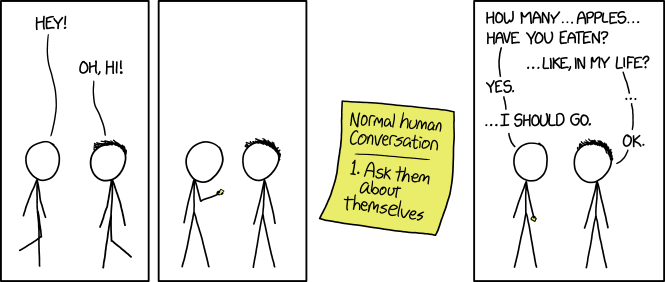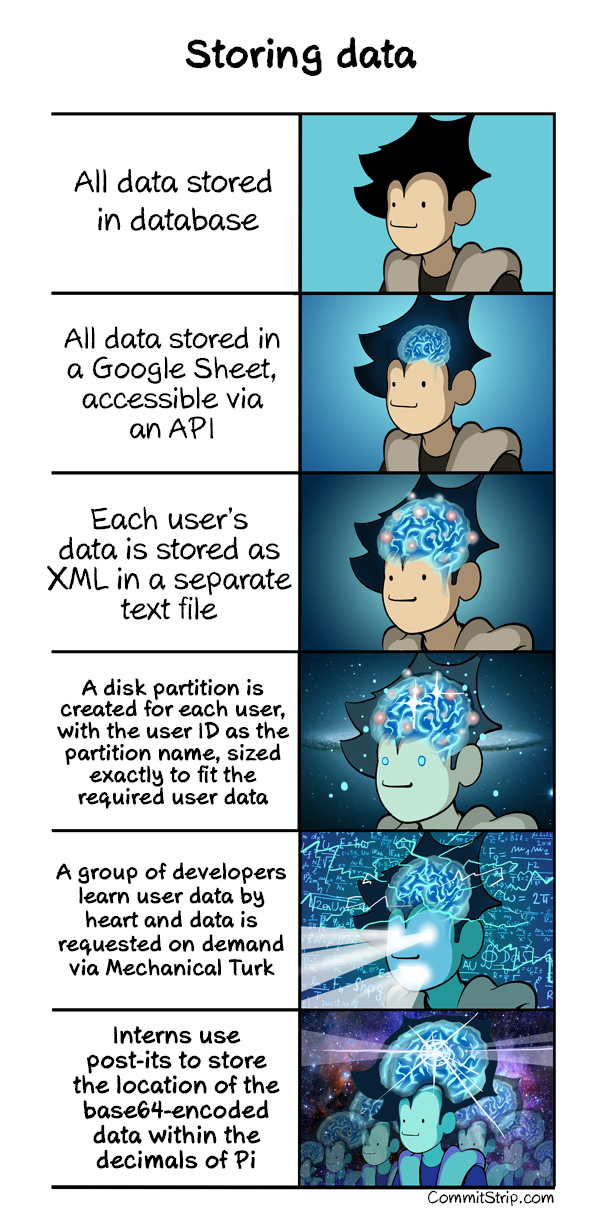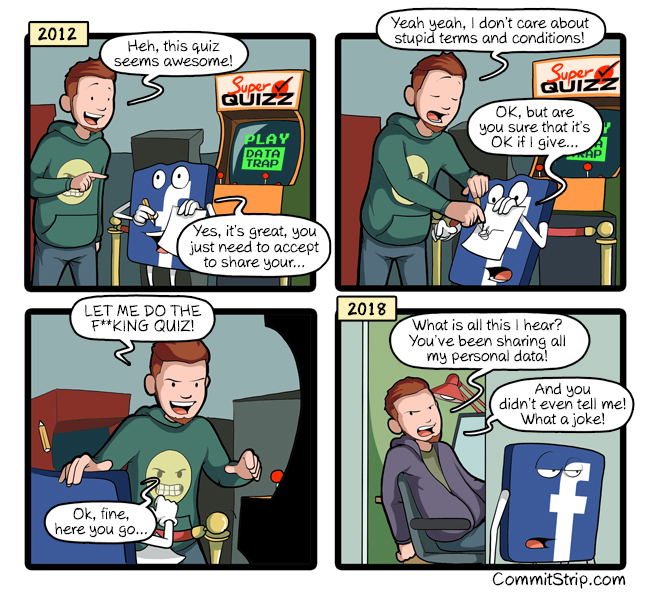Dan Jones
Shared posts
How to Write a Git Commit Message
An oldie but goodie, Chris Beams writes about the secret art of writing helpful Git commit messages. Here’s why he thinks it’s so important:
If you haven’t given much thought to what makes a great Git commit message, it may be the case that you haven’t spent much time using git log and related tools. There is a vicious cycle here: because the commit history is unstructured and inconsistent, one doesn’t spend much time using or taking care of it. And because it doesn’t get used or taken care of, it remains unstructured and inconsistent.
But a well-cared for log is a beautiful and useful thing.
git blame,revert,rebase,log,shortlogand other subcommands come to life. Reviewing others’ commits and pull requests becomes something worth doing, and suddenly can be done independently. Understanding why something happened months or years ago becomes not only possible but efficient.A project’s long-term success rests (among other things) on its maintainability, and a maintainer has few tools more powerful than his project’s log. It’s worth taking the time to learn how to care for one properly. What may be a hassle at first soon becomes habit, and eventually a source of pride and productivity for all involved.
This post pairs well with a more recent post on the topic. Where Chris provides a format for consistency, Stephen Amaza takes that same idea and expands it with suggestions for how to provide a commit message with better context.
I’ve always been pretty lazy with commit messages and there’s certainly been a few times when that’s come back to bite me in some terrible and unexpected way. One trick I’ll certainly be using from now on: using the first line of the message as a title and then having a much longer paragraph that follows it if the code doesn’t make sense at a quick glance.
Direct Link to Article — Permalink
The post How to Write a Git Commit Message appeared first on CSS-Tricks.
An ignored 1968 US govt report: racism & inequality are drivers of urban violence
In response to unrest and riots in urban areas across the US in the mid-to-late 1960s, President Lyndon Johnson formed a commission to find out why it was happening. As Ariel Aberg-Riger’s illustrated piece relates, the resulting report, the Report of the National Advisory Commission on Civil Disorders (more commonly known as the Kerner Report), was blunt in its conclusions: “Our Nation is moving toward two societies, one black, one white — separate and unequal.”

Dr. Martin Luther King, Jr. endorsed the report, calling it “a physician’s warning of approaching death, with a prescription for life”. You can read the entire report here (or just the summary…it’s 13 pages long) and more on its impact (or lack thereof) at the NY Times, Smithsonian Magazine, and The Atlantic.
Tags: Ariel Aberg-Riger Lyndon Johnson Martin Luther King politics racism USAGoogle is beta testing Wi-Fi Calling for Google Voice
Dan JonesThe first step towards retiring Hangouts integration with Voice.
If they can get all the functionality that's currently in the Hangouts integration directly in the Voice app/website, I'm all for it.
If you still use Google Voice, the service is getting a new feature soon, and Google is currently in the process of beta testing it.
Google has green-lit a beta test for Wi-Fi Calling in Google Voice. With this particular feature, Google Voice users will be able to make a call from a variety of different devices as long as they are connected to the internet.
Beta tests are for Android users and folks using Google Voice on the web. If you are using it from a computer, you’ll need to be using Chrome for now. Support for other browsers, like Safari and Firefox, is coming soon. iOS support is coming at some point in the future as well.
The beta test is open now, so if you want to participate in the pre-release tests you can do so by filling out this form. You will need to update your Google Voice app after you sign up and then you’ll get an email that will let you know what to do next.
This is a beta test, so Google has already compiled some known issues:
- Obihai devices won’t work if you enable calling over Wi-Fi (e.g. Incoming calls won’t ring your Obihai phone if you turn on calling over Wi-Fi and mobile data)
- You won’t be able to use incoming call options (call recording & call transfer) when you enable calling over Wi-Fi and mobile data
- On your computer, Wi-Fi calling only work with Chrome. Support for Firefox, Safari and Edge coming soon!
There are some issues with Bluetooth on Android devices as well:
- You won’t be able to use the buttons on your bluetooth device to answer calls or hang up
- Unable to use earpiece mode when a bluetooth device is paired
- Depending on your Android version, your calls might drop if you try to switch between Bluetooth and speakerphone
Are you going to check out the beta test for Google Voice?
Rolling Study Halls: turning bus time into learning time
I grew up as an “Army Brat,” a name for kids with a parent in the military who are often on the move. As my mom sums it up, my family spent 18 years on the road in over a dozen cities, 20 different houses, three elementary schools, two middle schools, two high schools—with one tropical fish and one surprise visit from a python in Monterey, CA. Throughout all these travels—meeting people from all different backgrounds, faiths and ethnicities—the highlight was always the excitement of going to a new school. School remains a fixture in my life all these years later.
I’m still a road warrior, traveling across America’s highways and byways for work. On these trips, I see firsthand the growing gap between children living in poverty and those who come from more comfortable circumstances. I meet students who live in remote or rural areas and endure long bus rides to and from school—in some places up to 90 minutes each way. In these areas, like so many others across the country, a lot of students don’t have access to connectivity or devices at home, but they often have schoolwork that requires it. All of this I observe through the lens of technology and its potential to improve lives. Not only does tech enable me to stay connected while I’m on the go, but we live during a time where even astronauts can have Wi-Fi on their space stations. Why couldn’t our students have access to it on their bus rides home?
So in 2016, in partnership with local education leaders in Caldwell County, NC (near our Lenoir Data Center), and some Googler volunteers, we helped install Wi-Fi on 11 school buses in the district. We also worked with the Education Foundation of Caldwell County to make sure there were educators who could accompany students on these Wi-Fi-equipped buses to provide support and help out with assignments. Because bridging the “digital divide” isn’t just about providing access and devices—it’s also about using that technology effectively.

The effects were immediate—almost too immediate for some bus drivers who were shocked (and a little confused) when their commutes became so quiet. Students were engaged. They were learning. And after a few months, there were more real results: School officials saw students do better in school. It was working.
After the success of the pilot, we brought it to another school district—Berkeley County, SC—targeting Lowcountry communities near St. Stephen and Alvin, areas where many students don’t have access at home. We worked with the College of Charleston to do research on the impact of this program and say that after one year, students were significantly more likely to be digitally literate and 80 percent of teacher participants said they were more likely to bring digital lessons into their classroom activities. They also saw homework completion go up, discipline rates go down, and a dramatic increase in overall student engagement.
Because of promising data like this, we’re expanding Rolling Study Halls across the country, starting today in Deer Trail School District in Colorado. As a part of our Grow with Google initiative, Rolling Study Halls will help students across the country access the tools and digital skills they’ll need to be prepared for tomorrow’s workforce.
- Edu_RollingStudyHalls_3.jpg
Students at Deer Trail Secondary School prepare to board their new Rolling Study Halls buses for the first time.
- Edu_RollingStudyHalls_1.jpg
Colorado Senator Cory Gardner joins students for the launch announcement of Rolling Study Halls at Deer Trail Secondary School.
- Edu_RollingStudyHalls_2.jpg
Google’s VP of Americas for Google, Susan Molinari speaks to a group of Colorado students.
We’re working with community leaders to outfit buses in 16 additional school districts in partnership with school networking nonprofit CoSN and broadband expert Kajeet. Together we hope to maximize access to learning time outside of school hours, with a goal of reclaiming more than 1.5 million hours for thousands of students by the end of this school year. School districts will be able determine policies to limit access to schoolwork only. Students will also have the chance to work collaboratively—alongside an onboard educator—to complete their assignments.
When we first started this program, I wanted to open up opportunities for students in need, and knock down barriers—like lack of access to internet at home—that stood in their way. To see an idea that I started in my own backyard go nationwide is humbling, but we never do it alone. Our program builds on the hard work and dedication of so many teachers, parents, school officials and nonprofit organizations who are making it all possible. And together, we can give these kids access to the learning opportunities they deserve.
Noodle on this: Machine learning that can identify ramen by shop
There are casual ramen fans and then there are ramen lovers. There are people who are all tonkotsu all the time, and others who swear by tsukemen. And then there’s machine learning, which—based on a recent case study out of Japan—might be the biggest ramen aficionado of them all.
Recently, data scientist Kenji Doi used machine learning models and AutoML Vision to classify bowls of ramen and identify the exact shop each bowl is made at, out of 41 ramen shops, with 95 percent accuracy. Sounds crazy (also delicious), especially when you see what these bowls look like:

With 41 locations around Tokyo, Ramen Jiro is one of the most popular restaurant franchises in Japan, because of its generous portions of toppings, noodles and soup served at low prices. They serve the same basic menu at each shop, and as you can see above, it's almost impossible for a human (especially if you're new to Ramen Jiro) to tell what shop each bowl is made at.
But Kenji thought deep learning could discern the minute details that make one shop’s bowl of ramen different from the next. He had already built a machine learning model to classify ramen, but wanted to see if AutoML Vision could do it more efficiently.
AutoML Vision creates customized ML models automatically—to identify animals in the wild, or recognize types of products to improve an online store, or in this case classify ramen. You don’t have to be a data scientist to know how to use it—all you need to do is upload well-labeled images and then click a button. In Kenji’s case, he compiled a set of 48,000 photos of bowls of soup from Ramen Jiro locations, along with labels for each shop, and uploaded them to AutoML Vision. The model took about 24 hours to train, all automatically (although a less accurate, “basic” mode had a model ready in just 18 minutes). The results were impressive: Kenji’s model got 94.5 percentaccuracy on predicting the shop just from the photos.
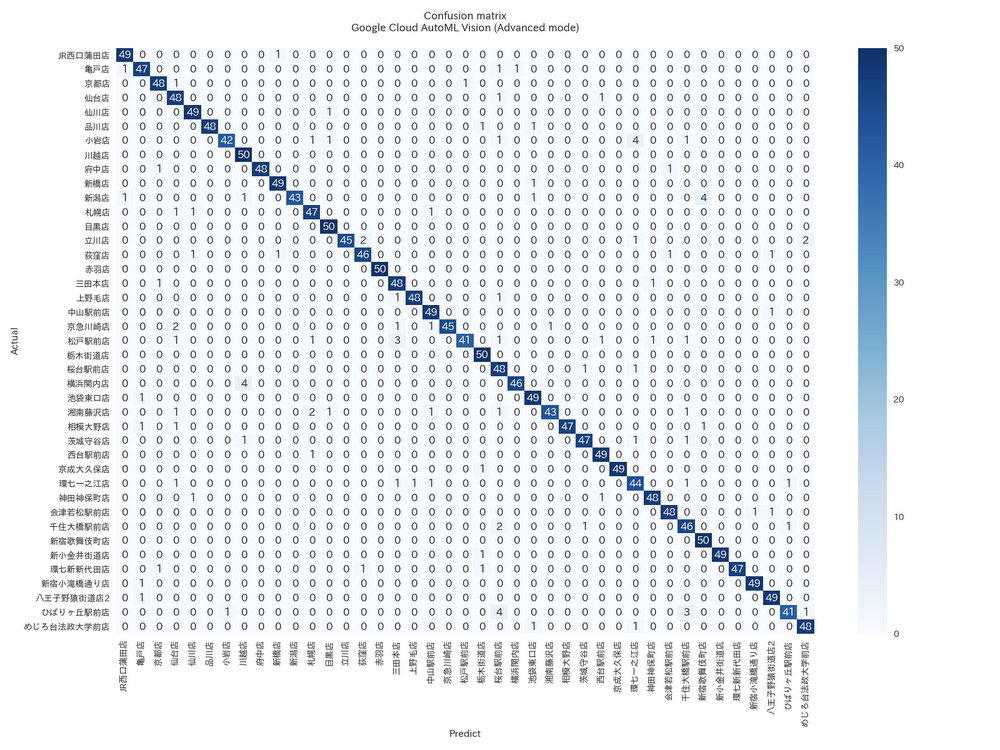
Confusion matrix of Ramen Jiro shop classifier by AutoML Vision (Advanced mode). Row = actual shop, column = predicted shop. You can see AutoML Vision incorrectly identified the restaurant location in only a couple of instances for each test case.
AutoML Vision is designed for people without ML expertise, but it also speeds things up dramatically for experts. Building a model for ramen classification from scratch would be a time-consuming process requiring multiple steps—labeling, hyperparameter tuning, multiple attempts with different neural net architectures, and even failed training runs—and experience as a data scientist. As Kenji puts it, “With AutoML Vision, a data scientist wouldn’t need to spend a long time training and tuning a model to achieve the best results. This means businesses could scale their AI work even with a limited number of data scientists." We wrote about another recent example of AutoML Vision at work in this Big Data blog post, which also has more technical details on Kenji’s model.
As for how AutoML detects the differences in ramen, it’s certainly not from the taste. Kenji’s first hypothesis was that the model was looking at the color or shape of the bowl or table—but that seems unlikely, since the model was highly accurate even when each shop used the same bowl and table design. Kenji’s new theory is that the model is accurate enough to distinguish very subtle differences between cuts of the meat, or the way toppings are served. He plans on continuing to experiment with AutoML to see if his theories are true. Sounds like a project that might involve more than a few bowls of ramen. Slurp on.
No laughing matter: Files Go introduces Bad Joke Detector
Files Go has been helping millions of people around the world free up space on their phone by removing junk files, old apps and forwarded chat media—such as the famous “good morning” memes from India. However, in our most recent research we noticed that there was something else taking up a lot of phone memory. It turns out people are also receiving a lot of very bad jokes from friends and family, leading to lots of daily frustration.
Today we’re proud to introduce the Bad Joke Detector. Using a custom-built deep neural network, Files Go can scan your smartphone for jokes with your permission, identify the bad ones and delete all of them with a single tap, freeing up space for more important things—like better jokes!
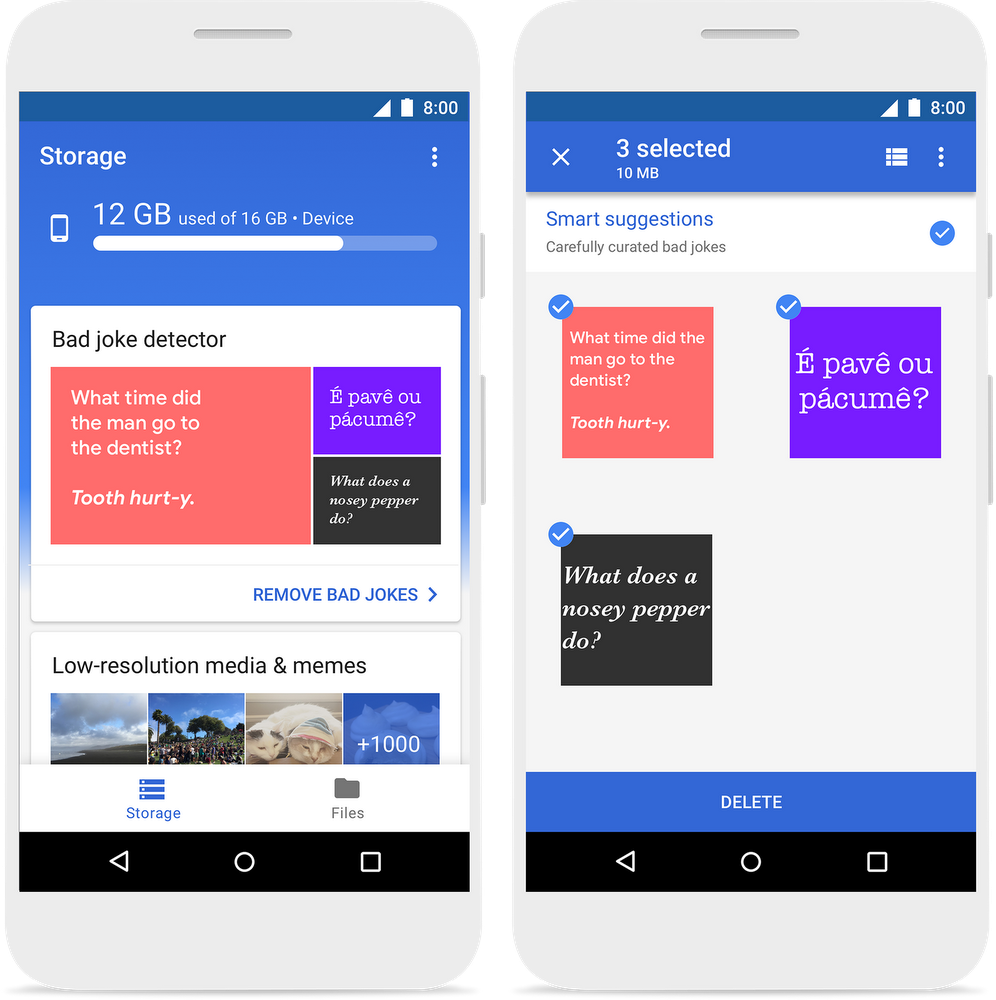
We hope this new feature will bring pun back into your life. Give it a try at g.co/getfilesgo.
Where’s Waldo? Find him in Google Maps
Hello, friends!
My name is Waldo. I love to travel around the globe—it’s a whole world of fun.
I’m always on the lookout for fantastic new places to explore. My last adventure started in sun-sational Mountain View, CA where I visited the terrific team at Google, including Google Maps product managers Max Greenwald and Shreena Thakore. Wow!
By the way, I’m not traveling on my own. Wherever I go, my trusty friends Wenda, Woof, Wizard Whitebeard, and even that pesky Odlaw go as well. You can come, too—all you have to do is find me!
Starting today, you can use Google Maps to join in my amazing adventures for April Fools this week. Are you prepared for a perplexing pursuit? I’ve shared my location with you on Android, iOS and desktop (rolling out now). To start the search, simply update your app or visit google.com/maps on desktop. Then press play when you see me waving at you from the side of your screen. You can even ask the Google Assistant on your phone, Chromebook or Home device, “Hey Google, Where’s Waldo?” to start.
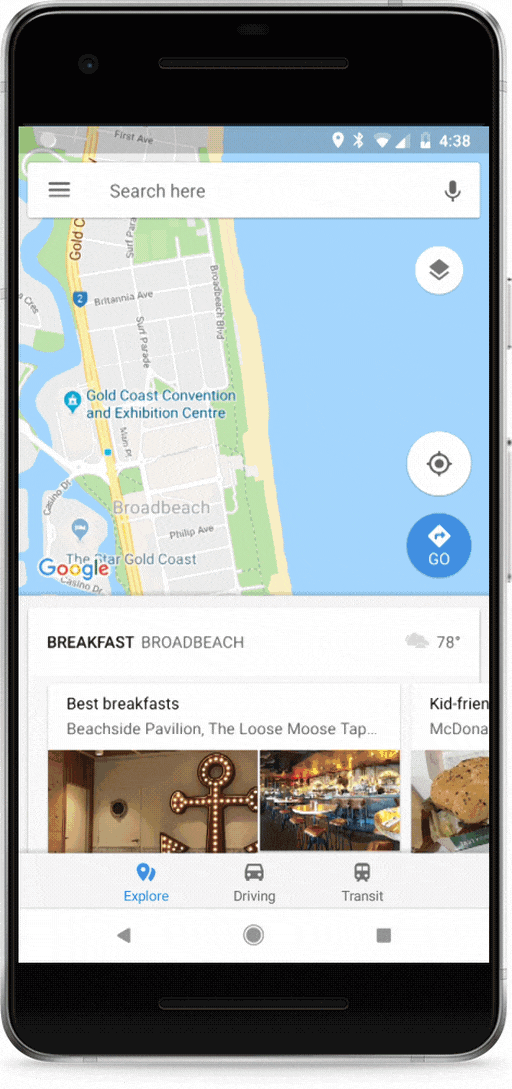
The fun doesn’t stop there. Once you spot me, you’ll be transported to places all around the world, where you can search for me over and over again. Incredible!
You can win wonderful and wacky badges throughout your journey by finding me and my friends. Remember, there’s Woof (but all you can see his is tail), Wenda, Wizard Whitebeard, and Odlaw.
Ready to join me on my travels? If you find me, take a screenshot and share it with @GoogleMaps on Twitter and Instagram with the hashtag #WaldoMaps. Let the journey begin!
Reboot: The Guardian Code (2018) TV-Y7-FV [Series]
Dan JonesThere's a live-action reboot of Reboot? I'm all over this.
 Four tech-savvy teens hone their skills as cyber-superheroes in a series of secret missions to save the world.
Four tech-savvy teens hone their skills as cyber-superheroes in a series of secret missions to save the world.
Hellfire (from Disney’s Hunchback of Notre Dame) - Metal Cover
This is how it should’ve been originally performed in the movie
Mozilla’s Facebook Container Extension
Mozilla:
This extension helps you control more of your web activity from Facebook by isolating your identity into a separate container. This makes it harder for Facebook to track your activity on other websites via third-party cookies.
Rather than stop using a service you find valuable and miss out on those adorable photos of your nephew, we think you should have tools to limit what data others can collect about you. That includes us: Mozilla does not collect data from your use of the Facebook Container extension. We only know the number of times the extension is installed or removed.
In other words, Firefox is now treating Facebook as malware that you need to be protected from.
Facebook to delay smart speaker over privacy concerns
Facebook will delay the announcement of its own smart speaker amidst scrutiny over the company’s data practices, Bloomberg reports. The social media giant has come under fire recently for its alleged part in allowing Cambridge Analytica, a political advertising firm, to gain unauthorized access to the information of over 50 million people. The situation has become so serious that Facebook co-founder and CEO, Mark Zuckerberg, is scheduled to testify before Congress in the coming weeks.
Facebook’s smart speaker is said to be a home device with features including video chat and a digital assistant, similar to Amazon’s Echo Show. The company planned to announce the new speaker at its annual F8 conference in May, with a release scheduled for the fall. The company is now delaying the speaker’s announcement, pending the outcome of this data crisis.
According to Bloomberg, Facebook’s focus group testing had already revealed privacy concerns regarding the smart speaker. Those questioned responded with worries about how much data information Facebook was collecting on its users, considering the vast bank of knowledge that the company already has. Though Facebook isn’t canceling its plans to launch a smart speaker this year, it will hold off on announcing it until this situation is resolved.
What are your thoughts on a Facebook-branded smart speaker? Would you purchase it? And more importantly, would you trust the company to manage your data responsibly?
Quick Reminder that Details/Summary is the Easiest Way Ever to Make an Accordion
Gosh bless the <details> element. Toss some content inside it and you have an accessible expand-for-more interaction with just about zero work.
See the Pen Simple details. by Chris Coyier (@chriscoyier) on CodePen.
Toss a <summary> in there to customize what the expander text says.
See the Pen Multiple Details/Summary by Chris Coyier (@chriscoyier) on CodePen.
Works great for FAQs.
There is really no limit to how you can style them. If you don't like the default focus ring, you can remove that, but make sure to put some kind of styling back.
Here I've used a header element for each expandable section, which has a focus state that mimics other interactive elements on the page.
The only browser that doesn't support this are the Microsoft ones (and Opera Mini which makes sense—it doesn't really do interactive).
This browser support data is from Caniuse, which has more detail. A number indicates that browser supports the feature at that version and up.
Desktop
| Chrome | Opera | Firefox | IE | Edge | Safari |
|---|---|---|---|---|---|
| 12 | 15 | 49 | No | No | 6 |
Mobile / Tablet
| iOS Safari | Opera Mobile | Opera Mini | Android | Android Chrome | Android Firefox |
|---|---|---|---|---|---|
| 6.0-6.1 | 37 | No | 4 | 64 | 57 |
But even then, it's just like all the sections are opened, so it's not a huge deal:

Wanna style that default triangle? Strangely enough, the standard way to do that is through the list-style properties. But Blink-based browsers haven't caught up to that yet, so they have a proprietary way to do it. They can be combined though. Here's an example of replacing it with an image:
summary {
list-style-image: url(right-arrow.svg);
}
summary::-webkit-details-marker {
background: url(right-arrow.svg);
color: transparent;
}See the Pen Custom Markers on Details/Summary by Chris Coyier (@chriscoyier) on CodePen.
Unfortunately, they don't turn, and there is no way to animate the default triangle either. One idea might be to target the :focus state and swap backgrounds:
See the Pen Custom Markers on Details/Summary by Geoff Graham (@geoffgraham) on CodePen.
But that seems to be limited to WebKit and Blink and, even then, the arrow will return once the item is out of focus even if the item is still expanded.
The post Quick Reminder that Details/Summary is the Easiest Way Ever to Make an Accordion appeared first on CSS-Tricks.
Whatever You Do, Don’t.

Scarfolk is a dystopian satire site about an English town that’s stuck in a 1970s time loop.
Scarfolk is a town in North West England that did not progress beyond 1979. Instead, the entire decade of the 1970s loops ad infinitum. Here in Scarfolk, pagan rituals blend seamlessly with science; hauntology is a compulsory subject at school, and everyone must be in bed by 8pm because they are perpetually running a slight fever. “Visit Scarfolk today. Our number one priority is keeping rabies at bay.” For more information please reread.



The slogans and advertisements the site produces are fantastic. It’s Nice That has a good overview of the some of the best pieces.
Tags: advertising designGoogle acquires GIF platform Tenor
You don’t have to look hard on the internet to find a GIF or two, and Google itself sees millions of searches related to GIFs every single day. Now the company has made a significant move to bring the moving pictures even more into the Google fold.
Today Google announced that it has acquired the GIF platform Tenor. Available on Android, iOS, and the desktop, Tenor has a huge library of GIFs available for users, making it easy to search for something you want to express your feelings. Tenor’s platform will be available to bring GIFs into Google Images as well as in other Google products, including Gboard.
Google does confirm that Tenor is going to continue to function as its own separate brand, but Google will be investing in the technology and will continue to build out relationships with “content and API partners”.
How do you feel about GIFs these days? Do you use them often?
Google Play helps you find what to watch and where to watch it
Dan JonesI usually use trakt to find out where a tv show or movie is streaming, but this might be easier.
There’s no shortage of entertainment to enjoy online. With so many different streaming apps out there, it’s not only challenging to figure out what to watch, but where and how to watch it. Google Play wants to change that. Now you can browse the latest new release movies, see which streaming app is playing your favorite show, or find something entirely new to watch with the Google Play Movies & TV app.
Check out what’s new:
-
Find the right streaming service: In both the Google Play Movies & TV app and in the Play Store, you can easily discover if your favorite show or movie is available on a streaming service. For example, just search for “This is Us” and you’ll see that the latest season is for sale on Play Movies & TV, but also that it’s available to stream on the NBC app (with a cable subscription) or on Hulu. To start, we’ll have support for more than two dozen streaming and TV everywhere apps, including ABC, CBS, FOX NOW, NBC, Hulu, HBO NOW, HBO Go, Showtime, Amazon Prime Video, Disney Now, HGTV, BET Now, Comedy Central and many more. We’ll continue to add more partners over time. Once you’ve found what you want to watch, it’s just one tap and we’ll send you right to the app that lets you stream it. From there, you can also cast to your TV.
-
Find something new to watch: Instead of scrolling endlessly to find a movie on a Friday night, now you can narrow down your search with just a few taps. Explore more than tens of thousands of shows and movies on Google Play by genre to quickly find comedy TV shows, an award winning drama, family movies and more to watch for free, rent or buy.

-
Tell us what you like, and what you don’t:Now in Play Movies & TV, we’ll show you TV shows and films based on what you watch and what you like—just use thumbs up/thumbs down to rate stuff you’ve already seen.
-
New watchlist tab:We’ve made it even easier to save shows and movies to watch later. All you have to do is long press on any show or movie and add it to your watchlist. In the watchlist tab, we’ll show you when it becomes available to buy or rent on Play, if the price has recently dropped, or if it is now available to stream.



